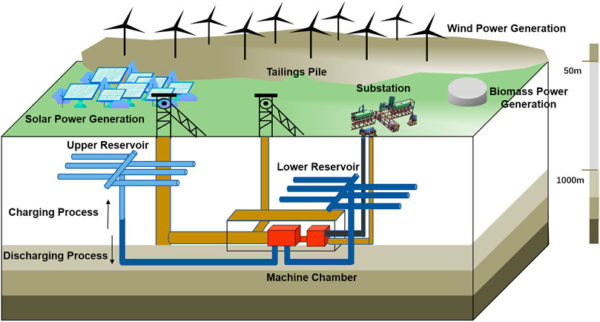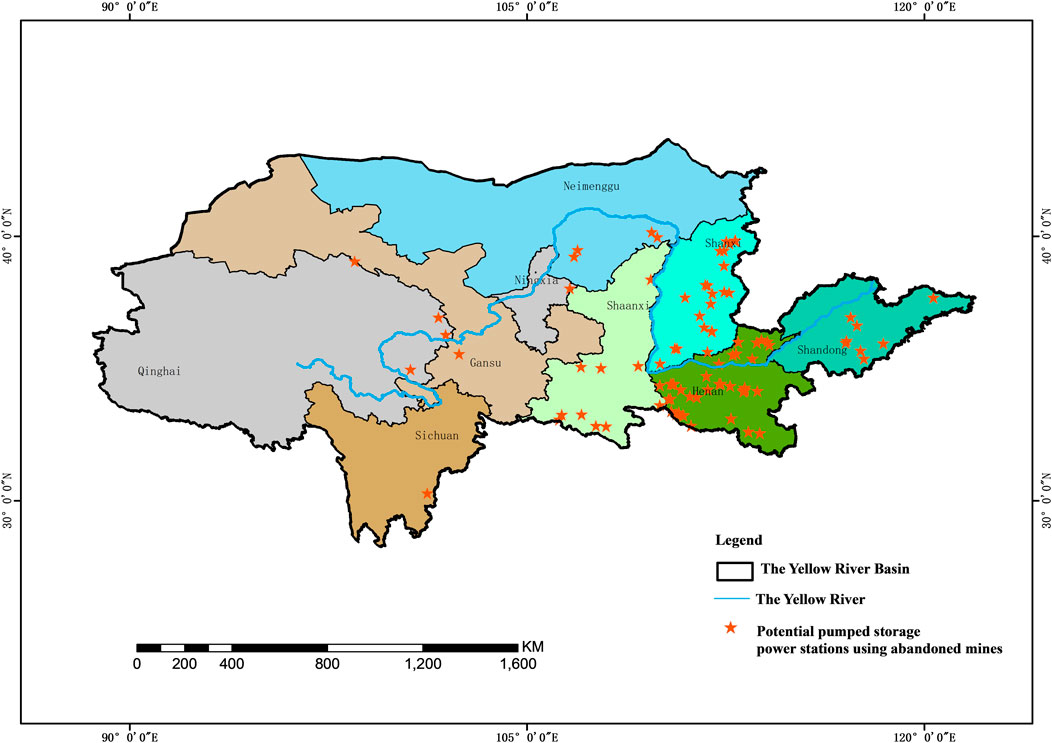Chinese researchers have estimated the potential of underground pumped hydro storage facilities for all the abandoned mines in the Yellow River basin, which crosses nine Chinese provinces and two autonomous regions.
The group analyzed the potential based on the availability of underground space, spatial structures, geo-environmental conditions, and installed capacity. They found that there are 91 abandoned mines that are suitable for pumped hydro storage facilities. The facilities would have a total installed capacity of 15,830 MW and would reduce carbon dioxide emissions in about one million tons.
In a case study, the scientists simulated the charging and discharging power generation of a hypothetical pumped hydro storage facility installed in one of the mines. They assumed pump and turbine efficiencies of 85% and 90%, respectively, and an overall efficiency coefficient of 80%. The mean water level of the upper and lower reservoirs was estimated at 100 m and 560 m, respectively.
The results show that solar and wind would generate 7.44 x 105 kWh to pump water from the lower to the upper reservoir. Then, the power generated by the reverse discharging process would be 7.3 x105 kWh. This would result in an installed capacity of 130 MW.
Popular content

Image: Key Laboratory of Mine Ecological Effects and Systematic Restoration, frontiers, Commons License CC BY 4.0
The scientists noted that the facilities could be built in Inner Mongolia, Gansu, and Qinghai, where most solar and wind resources are concentrated. They added that the study’s results are only preliminary, and that a “comprehensive and accurate potential assessment needs to take into account other constraints such as regional renewable energy distribution, regional energy demand, ecological assessment and transmission infrastructure.”
The research group described its findings in “Pumped storage power station using abandoned mine in the Yellow River basin: A feasibility analysis under the perspective of carbon neutrality,” which was published in Frontiers. The group includes scientists from the Key Laboratory of Mine Ecological Effects and Systematic Restoration, the College of Geoscience and Surveying Engineering, the China Institute of Geo-Environment Monitoring, and the School of Geography and Information Engineering.
This content is protected by copyright and may not be reused. If you want to cooperate with us and would like to reuse some of our content, please contact: editors@pv-magazine.com.


1 comment
By submitting this form you agree to pv magazine using your data for the purposes of publishing your comment.
Your personal data will only be disclosed or otherwise transmitted to third parties for the purposes of spam filtering or if this is necessary for technical maintenance of the website. Any other transfer to third parties will not take place unless this is justified on the basis of applicable data protection regulations or if pv magazine is legally obliged to do so.
You may revoke this consent at any time with effect for the future, in which case your personal data will be deleted immediately. Otherwise, your data will be deleted if pv magazine has processed your request or the purpose of data storage is fulfilled.
Further information on data privacy can be found in our Data Protection Policy.